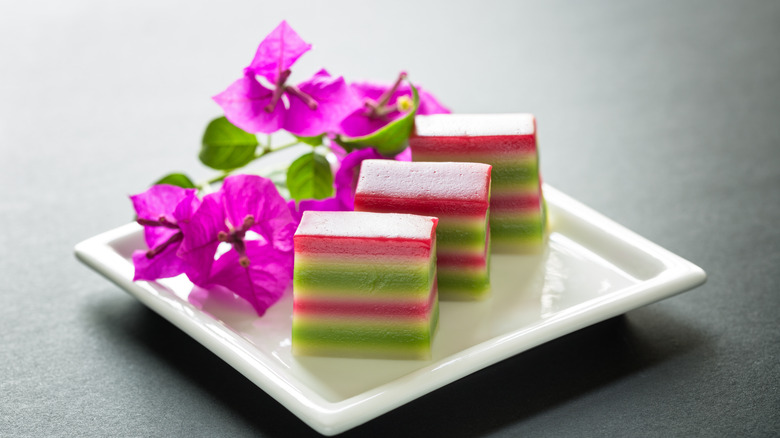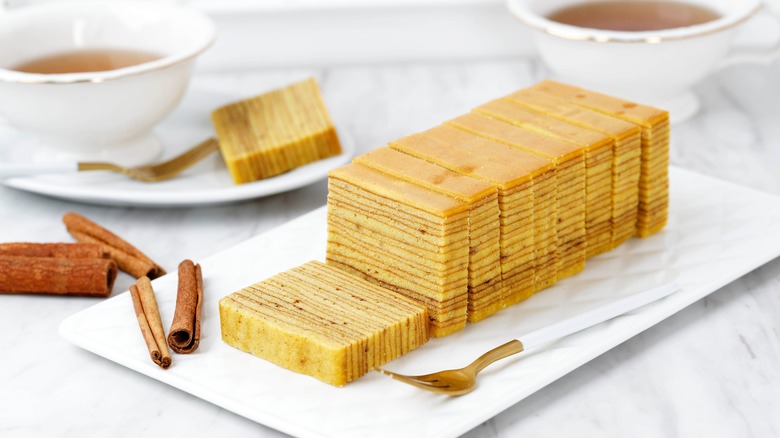The Colorful Layered Dessert That Celebrates The End Of Ramadan In Southeast Asia
You might already know that dates are a big part of breaking fasts during Ramadan, but with so many cultures and countries celebrating this month-long holiday, there's a wide range of foods associated with it. This year, the holiday begins on March 22 and ends on April 21. On the last day, Muslims will celebrate Eid al-Fitr, and part of this day includes a feast full of traditional Ramadan foods. Since that celebration has also been nicknamed the "Festival of Sweets," it's no surprise that desserts are plentiful. Dates are often involved, but other desserts also shine. In Turkey, Ramadan meals end with a light güllaç, which is filled with nuts and flavored with rose water. And in Southeast Asia, the colorful and layered kuih lapis is widely eaten.
There are a lot of different types of kuih (also spelled "kueh" or "kue," depending on the country and community), which are small chewy cakes that are usually made of glutinous rice flour and coconut milk. They can also be made with other starches like wheat flour or tapioca flour. Restaurant owner Victor Low told Thrillist that so many variations because of the regional differences in China, where the cakes could have originated. Southeast Asian countries have used their own local ingredients to continue evolving the dish. It can be sweet or savory, but what sets kuih lapis apart is its often rainbow-colored layers.
Different types of kuih lapis are enjoyed during Ramadan
During Eid al-Fitr, which goes by different names in other countries, you might see two versions of the layered dessert: kuih lapis sagu and kuih lapis legit. The ingredients for kuih lapis sagu often include rice flour, sugar, and coconut milk, and the colorful layers of the dessert come from food coloring. Ingredients like pandan, vanilla, or rose can also be used to flavor the dish. If you're enjoying a piece of kuih lapis sagu, you can peel each layer and eat them one at a time.
While kuih lapis legit also has many layers, the ingredients include butter and eggs, and this type of kuih is flavored with spices like cinnamon, cloves, and nutmeg. It was created during the Dutch colonization of Indonesia and is based on the recipe for the German cake baumkuchen. Often browner in color, kuih lapis legit can have rainbow layers. But the multicolored cakes are more often associated with kuih lapis sagu.
Another major difference between these two sweets is the number of layers. Kuih lapis legit usually has somewhere between 18 to 30 layers while another name for kuih lapis sagu is nine-layer cake. But it seems nine layers aren't always the standard. According to Epicurious, the Lady Wong bakery in New York has made kuih lapis with a whopping 57 layers. At least some people associate these cakes with longevity, so it's an ideal treat for major holidays.

